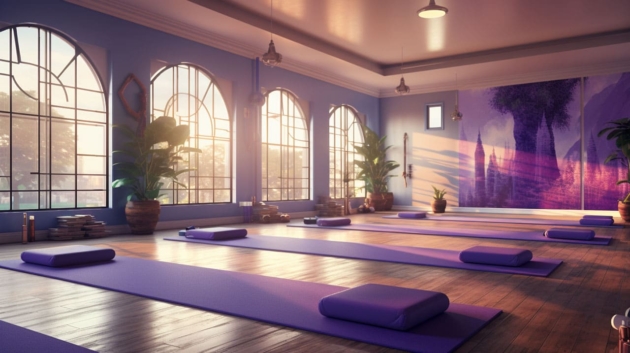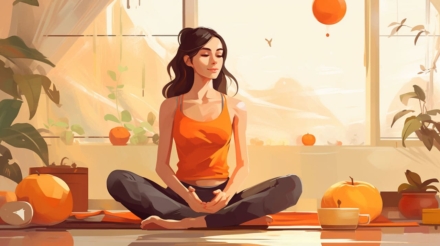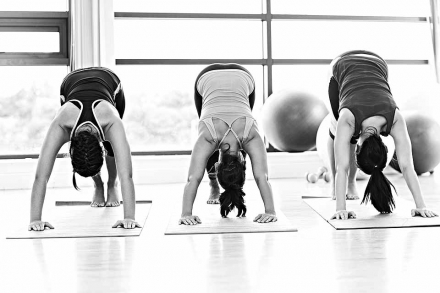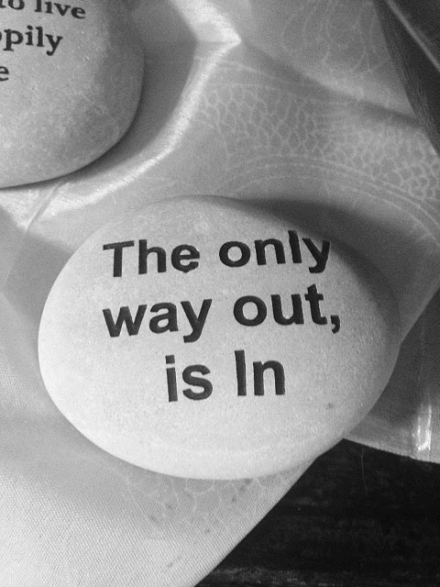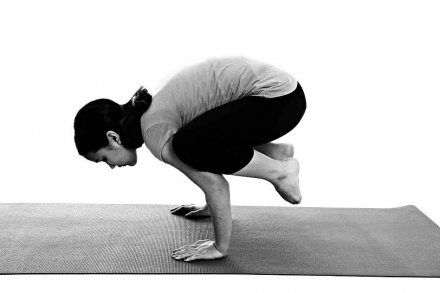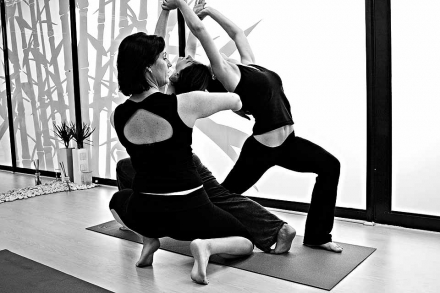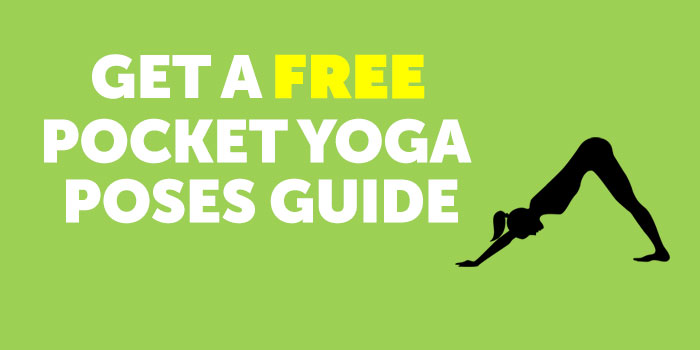Hey there! So, you’ve been practicing yoga for a while now, and you’re ready to step up your game? You want to tackle those challenging yoga poses that you’ve been eyeing for some time, but they still seem just a bit out of reach? Don’t worry, we’re here to help you make your dreams a reality. Yoga is not just about flexibility or strength, it’s about patience, persistence, and the right technique. So, buckle up, because we’re about to embark on the journey of mastering those seemingly impossible poses!
Whether it’s the headstand that makes your world go upside down, or the crow pose that demands balance you never thought you had, mastering yoga poses can feel like a Herculean task. But here’s the good news – with the right approach and some insider tips, even the most intimidating poses can become a part of your regular practice. We’ll break down the techniques step-by-step, offering advice that’s easy to follow and, more importantly, actionable. Ready to twist, bend, and stretch like never before? Let’s get started!
Warm Up
Let’s dive right into warming up for yoga, starting with gentle stretches to ease our bodies into action. Moving forward, we’ll intertwine the calming practice of breathwork, setting a serene tone for our session. As we progress, we’ll delve into a yoga warm-up for strength to prepare our muscles for the challenges ahead. For the ambitious yogis, we’ll also cover warming up for advanced yoga poses. Lastly, but crucially, we will discuss some common mistakes to avoid during a yoga warm-up to ensure a safe and effective practice. Happy warming up!
Begin with Gentle Stretches
Transitioning from the foundational principles of yoga, let’s now delve into the practical aspects of the practice, starting with the warm-up.
Gentle stretches are an ideal way to kick off your yoga routine. They help awaken the body, increase the blood flow to your muscles, and prepare your body for the more intense poses to come. Remember, yoga is not about straining or pushing your body beyond its limits, but about mindful movement and connection with your body.
Start with simple neck rotations, shoulder rolls, and wrist circles to wake up your upper body. Then, gently stretch your spine with cat-cow poses, and prepare your lower body with gentle knee bends and ankle rotations. It’s crucial to listen to your body and move at your own pace. This initial stretch not only warms up the body but also sets the tone for a mindful and enjoyable yoga session.
Incorporate Breathwork
Transitioning from gentle stretching, let’s now dive into an important aspect of your warm-up routine – breathwork. It might seem simple, but the way you breathe greatly impacts your yoga experience.
Incorporating breathwork into your warm-up can help you connect more deeply with your body, tune into your internal rhythms, and set the pace for your practice. Start by focusing on your natural breath. Notice its rhythm, depth, and pace. Then, gradually begin to deepen your breath, expanding your belly on each inhalation and gently contracting it on each exhalation. This breathwork, known as diaphragmatic breathing, can help to calm your nervous system and prepare your body and mind for yoga.
Remember, it’s not about forcing a specific breath pattern, but rather finding a breathing rhythm that feels natural and supportive to you. So, take the time to explore your breath and discover what works best for you.
Yoga Warm Up for Strength
After gently stretching your muscles and incorporating breathwork, let’s now transition into a more dynamic phase of our yoga practice – the Yoga Warm Up for Strength. 😊
In this part, we are going to focus on poses that will help us build strength in our bodies. A great place to start can be the classic Sun Salutations or Surya Namaskar. These sequences are not only fantastic for warming up your body, they also help to strengthen your arms, legs, and core.
Another beneficial pose for strength building is the Warrior Pose. It’s an incredible way to strengthen your thighs and ankles, while also stretching your shoulders and chest.
Remember, the aim is not to push yourself to the limit immediately, but to gradually increase your strength over time. So, listen to your body and approach each pose with patience and mindfulness. Smile, breathe, and enjoy your journey to strength through yoga!
Understand Proper Alignment
Understanding Proper Alignment in yoga begins with learning the anatomical breakdown of each pose. This knowledge is crucial for utilizing alignment cues effectively, leading to a safer, more beneficial practice. Remember, safety is paramount to avoid injuries. To further enhance your understanding, let’s explore the principles of alignment in yoga. Lastly, you’ll discover how yoga props can assist in achieving better alignment, making your practice both enjoyable and rewarding.
Learn the Anatomical Breakdown of Each Pose
Now that you’re warmed up and ready to go, let’s dive into the heart of yoga — understanding the anatomical breakdown of each pose. Just as a sculptor needs to know the intricacies of the human form to create a masterpiece, a yogi needs to understand the body’s structure to perfect each yoga pose.
Knowing how the body works can help you find a deeper and safer practice. By learning the anatomical breakdown, you’ll understand how each pose impacts different parts of the body. You’ll begin to see how the spine aligns in different poses, how the hips open or close, and where the weight should be distributed in your feet.
Remember, yoga is not about touching your toes; it’s about what you learn on the way down. So, let’s embark on this journey of learning and understanding our bodies better. It’s time to take your yoga practice to a whole new level!
Utilize Alignment Cues
Having warmed up our bodies and minds, let’s now delve a little deeper into the world of yoga. Imagine your body as a beautiful, intricate sculpture; every pose you strike is a work of art. But, like any masterpiece, it requires precision and attention to detail. Hence, the importance of alignment cues in yoga.
Alignment cues are instructions given to guide you into the correct pose form. They help to ensure that your body parts are in the right place, promoting a safe and effective yoga practice. For instance, in the Warrior II pose, an alignment cue might be “Ensure your front knee is directly above your front ankle.” This helps protect your joints and enhances the pose’s benefits.
Remember, these cues are not just words; they’re your roadmap to yoga success. So, listen, understand, and utilize alignment cues to refine your practice and prevent injuries. After all, yoga is not only about the postures, it’s about doing them correctly and mindfully.
Avoiding Injury through Proper Alignment
Building on our initial warm-up, let’s delve further into the importance of maintaining proper alignment during your yoga practice. Specifically, we’ll focus on how proper alignment can help you avoid injuries.
One of the most compelling reasons to prioritize alignment in your yoga practice is the key role it plays in preventing injuries. When you align your body correctly, you ensure that you’re using the right muscles and joints in the way they were designed, which drastically reduces the risk of strain or injury.
Think of it this way – your body is like a well-tuned machine. Each part has a specific role to play, and when everything is in its right place, the machine works smoothly. But, if you force a part to function in a way it wasn’t designed for, you risk damaging not only that part but the whole system.
Remember, there’s no need to rush or force a pose. Listen to your body and make necessary adjustments to maintain proper alignment. By doing so, you can enjoy a safe and fulfilling yoga practice.
Develop Core Strength
First, let’s explore how to utilize plank variations for a stronger core. This would naturally lead us to ways to strengthen the back and shoulders, essential areas when developing core strength. Then, we’ll dive into specific yoga poses for core strengthening, a holistic approach to fitness. We’ll further discuss how to incorporate core workouts in your yoga routine for maximum benefits. Lastly, we’ll highlight the key benefits of a strong core in yoga, revealing the importance of this aspect of your workout regime.
Utilize Plank Variations
After nailing the proper alignment, let’s now explore a fun and challenging way to build your core strength in yoga – using plank variations! One of the best aspects of yoga is its adaptability. You can always modify or vary poses to suit your needs and goals.
Planks are a fantastic way to engage and fortify your core. But did you know there are multiple variations that can make this pose even more effective and exciting? For instance, the side plank helps target your obliques, while the reverse plank emphasizes your lower back and glutes. There’s also the dolphin plank that not only engages your core but also strengthens your shoulders.
Remember, the key is to maintain proper alignment while performing these variations. So, why not mix up your routine and challenge your core with these different plank variations? Your yoga practice will thank you for it!
Strengthen the Back and Shoulders
Having absorbed the essence of proper alignment, let’s dive deeper into the realm of core strength, particularly focusing on the back and shoulders. It’s like opening a treasure chest of vitality and strength within your own body!
Back and shoulder strength plays an instrumental role in almost every yoga posture, from the simplest to the most complex. It provides stability, enhances your balance, and most importantly, protects you from injury. You can cultivate this strength through yoga poses like the Superman Pose and Child’s Pose.
The Superman Pose, aptly named, makes you feel like a superhero, challenging you to use your back and shoulder muscles to ‘fly’ off the ground. On the other hand, the Child’s Pose, although seemingly restful, can be a powerful tool to strengthen your upper body when done mindfully.
So, let’s put on our yoga capes and set off on this journey to unlock our inner strength!
Yoga Poses for Core Strengthening
Moving from the importance of alignment, let’s shift our focus to the heart of your yoga practice – core strength. A strong core is essential for maintaining balance and stability in your yoga practice. Yoga poses for core strengthening are an integral part of this process.
One of the most effective poses is the Boat Pose. This pose not only targets your core but also improves your balance. To perform this pose, sit on your mat, lean back slightly and lift your legs off the ground, extending them in front of you. Engage your core to maintain balance.
Another excellent pose is the Plank Pose. This pose works your entire body, with a special emphasis on the core. It also helps in boosting your upper body strength.
Remember, the key to any pose is to maintain proper alignment and engage your core muscles throughout. So, give these poses a try and start strengthening your core today!
Focus On Balance
Let’s focus on balance! Start with the basics like Practice Tree Pose, a great way to find your grounding. Then, Utilize Props to assist you in maintaining stability. Moving on, we’ll sharpen your Mental Focus in Balancing Poses, essential for achieving harmony. Next, we’ll explore Advanced Balancing Poses for a fun challenge. Finally, we’ll address Overcoming Fear in Balance Poses, to help you confidently embrace your yoga journey.
Practice Tree Pose
Shifting smoothly from our exploration of core strength, let’s now turn our attention to the vital aspect of balance. A great way to start is by practicing the Tree Pose.
The Tree Pose, or Vrksasana, is a wonderful introductory pose for beginners seeking to improve their balance. It’s a posture that encourages stability, focus, and a sense of grounding. To start, stand tall and imagine your body as a sturdy tree. Shift your weight onto your right foot and bend your left knee out to the side, placing the sole of your left foot onto your inner right thigh or calf. Keep your hands at your heart center or extend them overhead like branches reaching for the sky.
Remember, it’s not about perfection, but about practice. If you wobble or fall, it’s all part of the journey. Keep a 😊 friendly attitude towards yourself as you explore the Tree Pose. This is your time to grow and find your balance.
Utilize Props
Bridging from the foundation of core strength, let’s step onto the platform of balance. One great method to achieve this is to utilize props in your practice. Don’t shy away from using props, they are your friends on this journey! Props such as yoga blocks, straps, and even the yoga wall can be immensely helpful in assisting you to find and maintain balance.
For instance, yoga blocks can be used to bring the floor closer to you in challenging balance poses, providing stability and support. Straps can help in aligning your body correctly and the yoga wall can serve as a reliable buddy, supporting your body weight and helping you to grasp the mechanics of balance poses better.
Remember, using props doesn’t mean you’re any less adept in yoga. In fact, it’s a sign of wisdom and patience as you master the art of balance. So, embrace these friendly tools to enhance your practice.
Mental Focus in Balancing Poses
Moving from the solid foundation of core strength, let’s now shift our journey to the fascinating world of balance. Mental Focus in Balancing Poses is one of the most crucial aspects to master.
While physical strength plays a significant role, it’s your mind that truly holds the key. Balancing poses require a calm and focused mind. When you’re trying to balance, it’s easy for your mind to wander to thoughts of falling. But here’s a friendly tip: instead of focusing on the possibility of falling, focus on a specific point in front of you. This is called drishti in yoga, a focused gaze meant for aiding concentration.
In the beginning, it may seem challenging. But don’t worry, my friend! With consistent practice, you’ll find your brain growing better at tuning out distractions and focusing on the pose. Remember, the key to mastering balance is not just in your muscles, but also in your mind. So, keep practicing, stay positive, and trust your journey.
Find Your Breath
Firstly, let’s explore Ujjayi Breathing, a special technique that can enhance your yoga practice. With practice, you can synchronize your breath and movement, creating a harmonious rhythm during yoga. As you get comfortable, practicing Ujjayi breathing regularly will improve your control. Then, we’ll discuss how to incorporate breath into your daily yoga practice, making breathing exercises an essential part of your routine. Lastly, we will discover how these practices contribute to improving lung capacity for yoga, enhancing your overall performance and health. Let’s find your breath together in this wonderful journey!
Utilize Ujjayi Breathing
As we shift our attention from balance, let’s dive deeper into another vital aspect of your yoga journey – breath. Specifically, we’ll explore the Ujjayi Breathing technique, a pillar of pranayama practice in yoga.
Ujjayi Breathing is often referred to as ‘victorious breath’ or ‘ocean breath’, due to its soothing, rhythmic nature. It’s a fabulous way to bring a sense of calm and focus to your practice. To utilize this technique, start by taking a deep breath in through your nose, then exhale slowly, constricting the back of your throat as if you were fogging up a mirror. The sound you produce should be soft and rhythmic, like the gentle waves of the sea.
Practicing Ujjayi Breathing not only enhances your yoga practice, but also improves your lung capacity. So, take a moment in each practice to find your victorious breath and ride the waves of calm it brings.
Synchronize Breath and Movement
Having discovered the importance of balance, let’s now dive into the rhythm of your breath. The harmony of synchronizing breath and movement is a vital aspect of yoga practice.
This synchronization, often called vinyasa, brings flow to your movements, making it a graceful dance of sorts. Inhale as you stretch and reach; exhale as you fold and contract. The breath is your guide, your rhythm, your internal metronome. It’s the heartbeat of your yoga practice.
Remember, there’s no rush here. It’s not about speed, it’s about synchronicity. The journey is just as important as the destination. So, take your time, breathe deeply, and let your movements flow naturally with your breath.
By harmonizing your breath and movement, you not only improve your yoga practice but also tap into a deeper sense of calm and mindfulness. Keep practicing this, and soon you’ll find a new level of tranquility in your everyday life.
Practicing Ujjayi Breathing
Just as balance plays an essential role on the yoga mat, it also acts as a key pillar in life. Now, let’s shift our focus from balance to something equally vital, our breath. Specifically, let’s talk about practicing Ujjayi Breathing.
Ujjayi Breathing, also known as the “victorious breath,” is a breathing technique used in yoga to help center and calm the mind. To practice this, begin by taking a deep breath in through your nose, then exhale slowly through your nose while constricting the back of your throat. This should create a soft whispering sound, like the sound of the ocean.
Remember, it’s okay if you don’t get it right the first time. Just like any other yoga practice, Ujjayi breathing takes time and patience to master. So keep practicing, stay patient, and most importantly, stay positive. Your yoga journey is unique to you, so enjoy every breath along the way!
Increase Flexibility
Let’s dive into increasing flexibility! We’ll start with stretching techniques that can make a big difference. Then, we’ll explore the unique practice of Yin Yoga, which can greatly enhance flexibility. Following that, let’s discover specific yoga poses for flexibility to incorporate into your routine. We’ll then delve into the numerous benefits of improved flexibility. And finally, we’ll share tips to overcome those frustrating flexibility plateaus. So, let’s start this journey to a more flexible you!
Use Stretching Techniques
Transitioning from our breathing exercises, let’s now dive into some stretching techniques that can greatly help to enhance your flexibility. Stretching is like a conversation between your body and your mind; it’s a way to tell your muscles it’s time to elongate and relax. Here’s a fun fact: it’s best to stretch when your muscles are warm, such as after a light cardio session.
Try a combination of both static stretching and dynamic stretching for the best results. Static stretching involves holding a stretch for a longer period, say 30 seconds, while dynamic stretching is more about moving parts of your body and gradually increasing reach, speed of movement, or both. The beauty of stretching is you can do it anytime, anywhere. So, whether at home or in the office, take a few minutes to stretch and you’ll soon notice a significant improvement in your flexibility. Stay tuned for more on how to increase flexibility!
Practice Yin Yoga
Now that you’ve mastered the art of finding your breath, let’s dive into a practice that’ll make you as flexible as a gymnast – Yin Yoga!
It’s time to get up close and personal with this unique style of yoga that promotes deeper flexibility. Yin Yoga is a slow-paced style of yoga with postures, or asanas, that are held for longer periods of time. Unlike other types of yoga that focus on the muscles, Yin Yoga targets the deep connective tissues of the body. This means it’s perfect for increasing your flexibility!
By incorporating Yin Yoga into your daily routine, you’ll be able to stretch your body in ways you never thought possible. Remember, it’s not about forcing your body into poses, but rather allowing it to relax and open up naturally.
Don’t worry if you’re not super flexible yet. Yin Yoga is the perfect practice for all levels, so everyone can join the flexibility fun!
Yoga Poses for Flexibility
Now that you’ve mastered the art of calming your breath, let’s dive into the world of yoga to increase your flexibility even further! Are you ready?
Yoga is a wonderful tool for enhancing flexibility. It’s not just about twisting yourself into pretzel-like formations; it’s about gradually increasing your body’s range of motion. Here are some easy-to-do Yoga Poses for Flexibility.
The first is the Forward Bend. This pose helps stretch your hamstrings and lower back. Next, try the Cobra Pose to stretch your chest and shoulders while strengthening your spine. The Pigeon Pose is perfect for opening up your hips. Don’t forget the Downward Dog, a classic yoga pose that stretches your entire body.
Remember, these poses are not a competition. It’s not about how deep you can go, but rather about listening to your body and progressing at your own pace. So go ahead, give these poses a try and see how they help increase your flexibility.
Modify Your Practice
Modify Your Practice can be made easier by utilizing props and blocks. They offer support and increase flexibility. To further assist in balance, use a wall or chair for support. Be aware of your body, especially when dealing with injuries. Modify poses to suit your physical condition. As you gain confidence, gradually advance in your practice. Remember, yoga is a journey, not a race. Mastering challenging yoga poses requires patience and practice. Embrace these techniques and watch as your yoga practice transforms day by day.
Utilize Props and Blocks
With the newfound flexibility in your grasp, it’s time to make your yoga practice truly your own! Utilizing props and blocks is a wonderful way to further customize your practice and deepen your understanding of each pose.
Yoga blocks can be your best friend, especially when you’re working on poses that require a great deal of flexibility or strength. They offer support and help you maintain proper alignment, which is crucial for preventing injuries and maximizing the benefits of each pose. Blocks can also be used to make certain poses more challenging, by adding an extra element of balance or resistance.
Similarly, props like straps, bolsters, and blankets can also be incredibly helpful. They can provide additional support, help you get into poses that might be just out of reach, or simply make your practice more comfortable. So, don’t be shy! Embrace these tools and let them guide you towards a more enriched and personalized yoga journey. Remember, every yogi’s path is unique.
Use Wall or Chair for Support
Just as a flowering tree leans on a sturdy wall for support, so can your yoga practice benefit from some extra stability. Moving on to the topic of using a wall or chair for support, remember that these are not signs of weakness, but tools for empowerment.
Imagine the wall as a silent partner, offering you the balance you need when perfecting that tricky half moon pose. The chair? It’s like a faithful friend, providing an extra bit of steadiness for your Warrior III pose.
Don’t shy away from using these props in your practice. Whether you’re a beginner finding your footing, or an advanced yogi looking to deepen your poses, the wall and chair can be valuable tools. So, embrace these aids with a spirit of exploration, and you’ll find they can open up a whole new dimension of practice. After all, yoga is not just about flexibility, but also about balance, strength, and respect for your body’s unique journey.
Modifying Poses for Injuries
Just as flexibility can be a game-changer in Yoga, being able to adapt your practice to your unique needs is equally vital. Let’s explore how to modify poses for injuries.
Are you nursing an injury? No problem! Yoga is extremely adaptable, and with a few adjustments, you can still enjoy the benefits of your practice. Remember, the key is to listen to your body and respect its limits.
For instance, if you have a knee injury, you can use a cushion or folded blanket under your knees in poses like the child’s pose or the camel pose. Similarly, if you have a shoulder injury, you can adapt poses like the downward dog by doing it on your forearms instead.
Always discuss your injuries with your yoga instructor, they can help you find safe modifications for each pose. Remember, yoga is not about pushing through pain, it’s about cultivating awareness and healing. So always prioritize your well-being over achieving a perfect pose.
Prioritize Self-Care
Let’s delve into ways to Prioritize Self-Care. First, Listen to Your Body, it’s important to pay attention to what your body tells you. Then, Take Time to Rest and Recover, because you deserve it! Maintaining a Positive Attitude can greatly influence your wellbeing. Let’s not forget the Importance of Sleep for Recovery, it’s essential for overall health. Lastly, we’ll revisit the idea of Listening to Your Body, because it’s so vital. So, let’s make self-care a priority!
Listen To Your Body
While it’s essential to keep pushing your limits and refining your practice, it’s equally important to listen to your body. Your body is a complex machine, and it’s often smarter than you think! It knows when it’s time to rest, recover, and recharge.
Listen to your body’s cues. If you’re feeling drained or experiencing discomfort beyond the usual muscle soreness from a workout, it might be a sign that you need to slow down. Pay attention to your energy levels. Are you feeling fatigued or sluggish? This could be your body’s way of saying it needs a break.
Remember, it’s not about going hard all the time, but about finding a balance. Your body knows best, so it’s critical to tune in and respect its signals. By doing so, you’re not just avoiding potential injuries, but you’re also setting the stage for better performance in the future. So, listen, understand, and respond – your body will thank you!
Take Time to Rest and Recover
As we continue our journey towards a healthier and more balanced life, it’s vital to remember that, just like a well-oiled machine, our bodies also need time to rest and recuperate. Let’s now delve into the topic of taking time to rest and recover.
In a world that often values constant productivity, it’s easy to forget the importance of rest and recovery. But remember, our bodies are not machines. They need time to repair, recharge, and rejuvenate. Rest is not laziness; it’s a crucial part of maintaining a healthy lifestyle. So, do not feel guilty about taking a day off to unwind or engaging in activities that help you relax. Be it a soothing bubble bath, a calm yoga session, or just a day spent lazing around, these moments of rest are just as important as your active days. Remember, a rested body is a powerful body. So, take the time to rest, recover, and recharge.
Maintaining a Positive Attitude
As we shift from the hustle of improving our practice, let’s take a moment to focus on our internal dialogue. Beautiful and resilient as a mountain peak, maintaining a positive attitude is a vital part of self-care.
Imagine your mind as a garden. The thoughts you water grow; the thoughts neglected wither away. So, keep watering the seeds of positivity and optimism. Remember, it’s not about dismissing negative emotions or difficulties but rather acknowledging them and choosing to focus on the brighter side.
Challenges are inevitable, but they are also opportunities for growth and learning. They shape us into stronger individuals. Each time you stumble, reassure yourself with a simple yet powerful mantra, “I can and I will.” A positive attitude doesn’t just improve your mood; it can influence your overall health, from boosting your immune system to reducing stress levels. So, cherish it, cultivate it and let your positive attitude bloom.
Closing Meditation
Remember, mastering yoga poses, especially the challenging ones, requires patience, perseverance, and a mindful approach to your practice. Each step mentioned, from warming up to self-care, is essential in your journey towards achieving those challenging yoga poses.
Stay positive and remember to enjoy the process. There’s no rush in yoga, it’s all about the journey. So, keep practicing, keep breathing, and before you know it, you’ll be mastering those challenging yoga poses with grace and ease.
0



